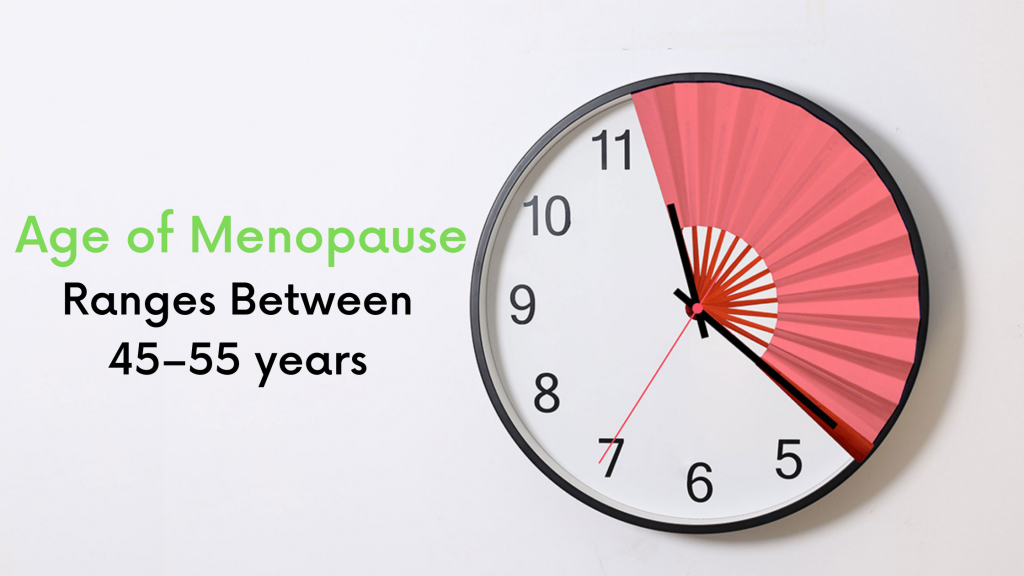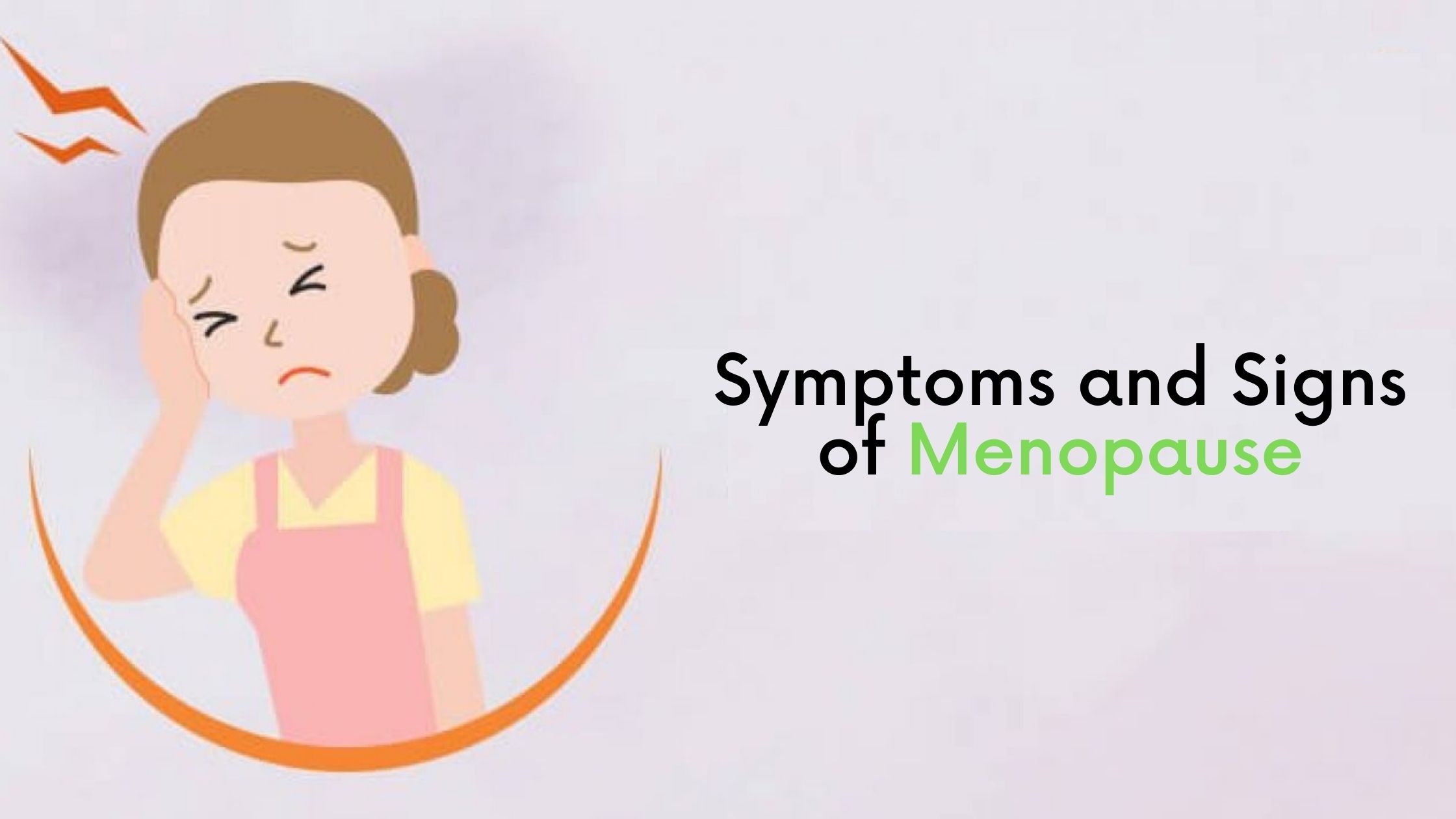

Menopause is an irreversible part of the overall aging process involving a female’s reproductive system. It is diagnosed retrospectively after twelve consecutive months of no periods (amenorrhea) without any pathology. The final menstrual period is a normal physiological process that marks the end of a woman’s reproductive cycle resulting from loss of ovarian follicular activity.
There are three stages to the transition from reproductive to the non-reproductive cycle of the uterus, which include
Premenopause refers to the period before menopause. Postmenopause is the period after menopause; generally, 24 to 36 months after the last period, where symptoms and signs of menopause subside, and perimenopause is the period around menopause, usually around 40–55 years. Perimenopause is the part of the climacteric when the menstrual cycle is typically irregular. Climacteric is the time during which a woman passes from the reproductive to the non-reproductive stage.
The age of menopause ranges between 45–55 years, the average being 50 years. The age of menopause is genetically predetermined apart from being influenced by certain factors like severe malnutrition and smoking.
If menopause occurs at or below 40 years, it is said to be premature or early menopause. Menopause that occurs before this age, whether natural or induced, is known as early menopause. Along with hot flashes, mood swings, and other symptoms which usually accompany menopause, early menopausal women also have to cope with additional physical and emotional concerns.
Reasons for early menopause include genetics, lifestyle factors, chromosome defects, autoimmune diseases, and epilepsy.
Signs and symptoms of early menopause include irregular periods, noticeably longer or shorter periods than usual, heavy bleeding, spotting, mood swings, change in libido, vaginal dryness, hot flashes, night sweats, loss of bladder control.
Complications of early menopause apart from the most common infertility include increased risk of cardiovascular disease, osteoporosis, depression, and dementia.

One can observe any of the following menstruation patterns before menopause;
Related Menstrual Hygiene – The Present Scenario and Adverse Effects
The significant symptoms and the health concerns of menopause are:
Vasomotor symptoms: The characteristic symptom of menopause is hot flush. A hot flush is characterized by the sudden feeling of heat followed by profuse sweating. It may also include symptoms of palpitation, fatigue, and weakness. The physiologic changes with hot flushes are perspiration and cutaneous vasodilatation. It may last for 1–10 minutes and maybe at times unbearable. Another aspect is sleep depravity due to night sweats.
Urogenital atrophy: Low estrogen levels may cause dyspareunia and dysuria. Along with these vaginal infections, dryness, pruritus, and leucorrhea are also common. The urinary symptoms are urgency, dysuria, recurrent urinary tract infection, and stress incontinence.
Osteoporosis and fracture: Following menopause, there will be osteoporotic changes due to a decline in the collagenous bone matrix. During menopause, bone loss increases to 5% per year. Primary (type 1) osteoporosis is due to estrogen loss, age, deficient nutrition (calcium, vitamin D), or hereditary. Osteoporosis may lead to back pain, loss of height, and kyphosis. Fracture of bones is a significant health problem. The fracture may involve the vertebral body, femoral neck, or distal forearm (Colles’ fracture). Morbidity and mortality in older women following the fracture are high.
Cardiovascular disease and Cerebrovascular disease: Oxidation of LDL and foam cell formation cause vascular endothelial injury, cell death, and smooth muscle proliferation. All these lead to vascular atherosclerotic changes, vasoconstriction, and thrombus formation. Risks of ischemic heart disease, coronary artery disease, and strokes are increased.
Psychological changes: An increased frequency of anxiety, headache, insomnia, irritability, dysphasia, and depression. They may also have dementia, mood swing, and an inability to concentrate.
Skin and Hair: There is thinning, loss of elasticity, and wrinkling of the skin. After menopause, there is some loss of pubic and axillary hair and slightly balding, which may be due to low estrogen levels with a normal level of testosterone.
Sexual dysfunction: Estrogen deficiency is often seen with decreased sexual desire. This may be due to psychological changes (depression anxiety) and atrophic changes of the genitourinary system.
When to see a doctor?
Normal menopause rarely requires anything else except for symptomatic treatment; however, doctors should adequately counsel every woman with postmenopausal symptoms about the physiologic events to remove her fears and minimize or dispel anxiety symptoms, depression, and insomnia. Reassurance is essential.
Lifestyle modification includes – increased physical activity, reducing high coffee intake, smoking, and excessive alcohol. Must have adequate calcium intake (300 mL of milk) and reduce medications that cause bone loss like corticosteroids.
A nutritious diet – balanced with calcium and protein is helpful.
Supplementary calcium – daily intake of 1–1.5 g can reduce osteoporosis and fracture based on physicians’ advice.
Vitamin D supplementation of vitamin D3 (1500–2000 IU/day) and calcium can reduce osteoporosis and fractures. Exposure to sunlight enhances the synthesis of vitamin D3 in the skin.
Based on symptoms and requirement, the physician may prescribe bisphosphonates, fluoride, calcitonins, SERMs, clonidine, thiazides, gabapentin, phytoestrogens, soy protein.
After careful evaluation and necessity, HRT ( hormonal replacement therapy) might also be suggested, which comes with its own benefits and risks.
Menopause is an unavoidable natural phenomenon that brings about changes in women. It’s best to be prepared knowing the symptoms and consult your doctors on the onset of menopause. Equip yourself with knowledge about menopause if you are around 45 years of age so that panic is the least of your concerns when it sets in. Our experts are always within your reach if you have any problems or in need of help. We are always with you, for – your health is our priority.
Disclaimer: The information included here is only for knowledge sharing purposes, and the blog is not intended to be a substitute for diagnosis, medical advice or treatment by a healthcare professional. Because of individual needs appropriate advice, the reader should consult their doctor to determine the appropriate disease depending on their situation.

 Emergency Number
Emergency Number